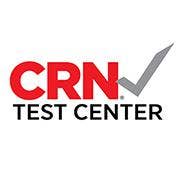Test Center Review: HP Chromebook 13

The HP Chromebook 13 is a thin, powerful and pretty laptop that calls into question everything we thought we knew about the Chromebook concept.
It’s not for consumers or people in the education market. It’s not aimed at affordability (though it’s still less expensive than many new ultraportable laptops hitting the market). And it’s definitely not made out of plastic.
Instead, the CRN Test Center found that the HP Chromebook 13 is perhaps the first serious offering for Chromebook use in the enterprise. It’s the type of device that could help a recent IDC prediction -- that a quarter of Fortune 500 companies will be deploying Chromebooks by 2018 -- come true.
[Related: Head-To-Head: HP Chromebook 13 Vs. Dell Chromebook 13]
What we liked most about HP’s Chromebook 13 is how it expertly blends the best of user experiences on a PC and a Mac. HP is a Windows shop, and yet the Chromebook 13 is targeted at replacing Mac usage in businesses, according to HP. So the company has smartly borrowed some important functionality from the Mac world, such as a trackpad that lets users swipe right or left in the browser to quickly move forward or backward to a different page.
This is critical because, as a device running Google’s Chrome OS, the browser on the HP Chromebook 13 is where users will mostly be living and any boost to ease of navigation is a plus.
The laptop tested out by the CRN Test Center was speedy, thanks to 8 GB of RAM with an Intel Core m5 processor. Notably, the laptop is the first Chromebook to come with sixth-gen Core m processors from Intel; other configurations, with the Core m3 or m7, are also available.
As far as what’s on the outside of the HP Chromebook 13, this is where we feel like the laptop really excels. The device looks similar to, but still distinct from, a MacBook Pro in that it’s got a ’brushed aluminum’ finish, and it looks great. And the 13.3-inch display is stellar -- it’s a QHD+ BrightView display with resolution of 3,200 x 1,800, which again calls to mind the Mac universe and its Retina display.
The HP Chromebook 13 also ranks among the thinnest laptops on the market right now, at 0.51 of an inch, though it’s not quite in the running for lightest laptop at 2.86 pounds.
The battery life in in our test reached about 5 hours on a charge, which we don’t consider too bad considering we had the brightness up all the way, though HP does promise 8.75 hours for the QHD+ version.
Another first for HP’s Chromebook 13 is in its ability to dock, using the HP Elite USB-C docking station.
The biggest downside of HP’s Chromebook 13 is that users are significantly constrained when not on Wi-Fi. The machine is of course oriented toward cloud apps -- such as Gmail and Docs, though Office 365 works just fine too. But it’s not geared toward offline work -- there are purportedly workarounds, though we weren't able to find them easily.
Offline functionality could get a boost, however, once Android apps come to Chromebook, through the launch of the Google Play store on Chrome OS (an exact date hasn’t been released).
Still, we were impressed by the price of the HP Chromebook 13 we tested out -- $819 -- considering the quality of the display, the horsepower and the overall niceness of the user experience. Our verdict: This is an ideal machine for anyone that’s both living their work life in the cloud and frequently on the go.